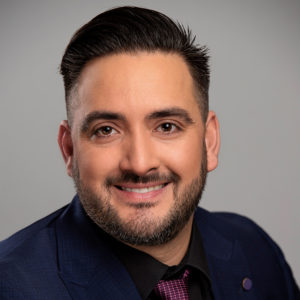Sarah, 33, practises her profession of notary as a partner in a private practice. Her husband, Stephen, 35, is Director of Operations for the City of Saint-Hyacinthe. They live on the outskirts of the city, with their two children, aged 7 and 4.
The couple has been in a civil union for about ten years. Sarah and Stephen bought their family home five years ago and plan to live there for a long time, as they don’t expect to retire for another 25 years or so.
The couple’s financial and legal situation
| Sarah | Stephen | |
| RRSP account | $140,000 | $150,000 |
| TFSA account | N/A | N/A |
| Pension plan | No | Yes |
- The couple’s annual expenses come to about $120,000, excluding their mortgage. Their family home has a market value of approximately $800,000. They have $450,000 left to pay on the mortgage.
- Stephen has a defined-benefit pension plan with his employer. Sarah has no pension plan.
- Sarah has opened a family RESP account, into which she makes a monthly payment of $180.
- Both spouses have life and disability insurance.
- As for legal documents, Sarah and Stephen each have an up-to-date protection mandate and will.
Family and retirement: what are my options?
- Sarah has no retirement plan, apart from the savings accumulated in her RRSP. And since this account is not maximized, she may have to continue working longer than she would like to maintain her standard of living, or lower her lifestyle expectations at that stage. How can she optimize her savings to achieve her goals?
- She also wonders whether she might want to have a third child in the next two or three years, and how she can keep her savings on track in this context.
Points to consider
- Sarah delayed planning her retirement. How can she make up for lost time?
- As a partner in a notary firm, maternity leave is more complicated for her because of the difficulty of finding a replacement.
- The impact of a third child on the couple’s finances could be significant and should be assessed.
Skandar Khalfat’s advice |
 |
|
CFA®, Fin. Pl. |
How to optimize the couple’s savings?
Skandar comments: “The question of retirement is very important. Sarah has managed to put some savings into her RRSP, but it’s still not enough because, unlike her spouse who will receive pension benefits, she will have to rely entirely on her savings at that stage of life.”
“A periodic savings plan would enable her to accumulate the funds required to prepare for a comfortable retirement and maintain the standard of living she wants,” Skandar explains. “She could build these savings by starting to contribute small, bimonthly amounts that are easy on her budget, and then gradually increase them over the months and years. After a while, she’ll be able to save enough to maximize her RRSP contribution room, equivalent to 18% of her salary. Not to mention the tax deduction she gets for her contributions, which she could use to increase her savings. To help her maximize her RRSP, Stephen could also pay a larger share of the family’s expenses.”
Maximize the RESP
Another point to consider, according to Skandar: “Sarah opened a family Registered Education Savings Plan (RESP) for her children’s post-secondary education, but it’s not optimized. To reap the full benefits, she should maximize her contributions, which would increase the government grants paid into the account and increase the amount available when her children reach that stage. A plan should be put in place to catch up on unmaximized contributions from previous years as soon as possible.”
Start with a realistic budget
Sarah has certain expectations for her retirement, but are they realistic? “By making a budget,” says Skandar, “you can categorize your personal and family expenses, and assess your savings capacity with a view to maximizing your RRSP and RESP, and perhaps opening a TFSA. Currently, the family’s expenses total $120,000 a year, plus mortgage payments. We need to see how Sarah and Stephen share the expenses: does one pay a larger share of the recurring expenditures, and the other save more? A budget should show how to increase their savings.”
“The retirement projection will undoubtedly show that with her current savings rate, she will not achieve her goals. Family allowance payments could help, but since the family income is quite high, their payments could be reduced. Sarah and Stephen should find out how their family income affects the allowances they receive.”
Options to evaluate carefully
“As for maternity leave, since Sarah is a partner in a private practice, it will no doubt be difficult for her to find a replacement,” says Skandar. “The Québec Parental Insurance Plan (QPIP) will provide her with an income during her weeks or months of leave. The basic plan will provide lower benefits for a longer period, while the special plan benefits will be higher for a shorter period.”
“An attractive option for Sarah and Stephen would be to take a parental leave that would be shared between both parents. Stephen could extend his leave to allow his partner to return to work more quickly. Sarah should also be aware that, under the basic plan, she doesn’t have to take all her leave at once: she could spread it out and initially take only 15 or 18 weeks, and coordinate it with her spouse, who is entitled to parental leave as an employee. The most important thing will be to examine their options carefully and think through together which one they prefer, because once the choice is made with the QPIP, it can’t be changed.”
Plan better with a retirement projection
The arrival of a third child will also have a definite impact on the family budget. Skandar suggests that Sarah do a retirement projection both to quantify this impact and to see its effects on her long-term retirement plans. “Her current cost of living certainly won’t be the same. She already has two children and would like a third: it’s a very different lifestyle!”
“Doing a long-term projection would be advisable and should reassure her. Our clients often save, but not enough. A projection would quantify the shortfall. A projection would also show the changes resulting from the arrival of a third child. We could look at the allowances she would be entitled to at the federal and provincial levels, which could help with expenses.”
Decisions about important life goals such as family or retirement call for the expertise and experience of an fdp financial planner, who understands the challenges of your profession. By considering the possible scenarios and options available to you, you’ll be able to make the best decisions for both your family and your career.
The situations described are based on a fictitious case and the interpretation of the information provided should in no way be considered a personalized recommendation. Please consult your advisor.




















